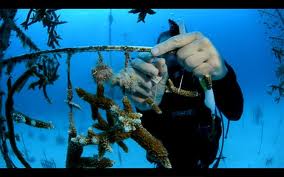No country is immune to natural disaster.
In recent decades, the frequency and intensity of natural disasters has escalated and many experts predict this rise in climate-induced extreme weather events will continue in the future.
Although many are still reeling from the devastating efforts of Tropical Cyclone Evan, the stride towards normalcy have been impressive.
In the Mamanuca island group, Evan felled vast numbers of trees and damaged infrastructures. But the storm’s reach was felt not only on land but also under water.
It has certainly stressed coral reefs across the 23 islands-home to some of Fiji’s finest beach resorts.
Reefs in the Mamanucas has adapted well after the flood but the recent cyclone with the grip of climate change tightens, the frequency and intensity of the disturbances will increase, leaving the reef too little time to recuperate between disasters.
And because most of the reefs rise almost to the surface of the ocean, they are extremely vulnerable to wave action.
A cyclone generates massive waves that literally pulverise coral, leaving a trail of rubble and smashed life. The damage can extend tens metres below the surface.
The Mamanuca Environment Society (MES) is mapping out a strategy to cushions the effects of Cyclone Evan on the reefs.
Because coral reef structure buffers shorelines against waves, storms and floods, helping to prevent loss of life, property damage and erosion, the work is very important.
When reefs are damaged or destroyed, the absence of this natural barrier can increase the damage to coastal communities from normal wave action and violent storms.
Without coral reefs, many beaches and buildings would become vulnerable to wave action and storm damage. In one instance, when the coral and sand was mined away in the Maldives, it cost $10 million USD per kilometre to build a wall to protect the coastline.
Not only do these kinds of storms directly affect coral reefs and the entire marine environment, there are indirect disastrous consequences.
MES Project Officer Soropepeli Seru said because of the cyclone, more efforts will be directed on coral restoration this year.
Mr Seru said storms rarely kill all corals. And because storms are a natural part of coral reef ecosystems, coral species should be adapted to this type of disturbance and be able to recover.
“Human impact is worse because it is continuous. Human continues to overfish, step on corals even though they have been warned. For natural impacts, it only occurs once or twice but not continuous. Cyclones are not as damaging to reefs as the effects of climate change. The coral will already be regenerating,” he said.
He is also hopeful that the type of coral that would have been lost is the type that can regenerate most quickly such as staghorns and that the slower growing more solid coral such as Brain Coral will have withstood the cyclone.
However, Seru highlighted that this could be hindered by “run offs from the hills causing sedimentation on corals. Due to run offs, also litter will accumulate on the reef flat which could the impact much worse. Coral can’t really compete with the sort of pollution being generated”.
“Diving is one of the major attraction in the Mamanucas and restoring corals is very important.”
Mr Seru said it will take approximately two to three years before the damaged are significantly recovered.
-Ends-



if human impact is bad, so is it a good idea to give them a chance to protect coral reef? as we known people can not be stopped to close to coral, then we hope them can help a little thing to coral conservation. for example, i will be very glad to plant or relocate a coral when i travel there.